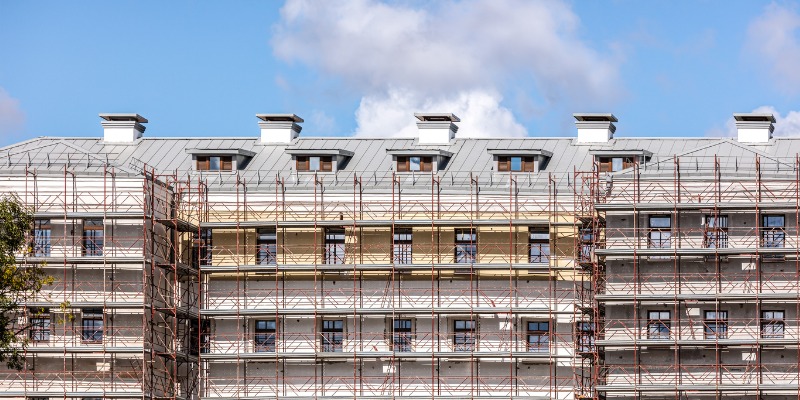The Top 9 Factors that Impact Restoration Costs

Property owners and building managers know their buildings are major assets. But unfortunately, restoring one after it has been neglected or damaged by a fire, flood or similar disaster can be expensive. One of the first things most managers in this position want to know is: what will my building restoration cost?
At WCBR, we can clearly outline what your restoration will cost with an official quote. However, you may still want to know which factors are critical in determining that cost. Here are the top nine factors that impact restoration costs, according to our experts.
1. Extent of Damage
The number one factor in how much your restoration will cost is simply the extent of the damage your building or property has suffered. Therefore, it makes sense that dealing with the results of one minor leak on one wall of the building will be less costly than restoring a building flooded by a tsunami.
The extent of the damage and the source of the damage also matter. For example, if you have a sewer backup, sterilizing any surfaces that come in contact with the sewer water will be necessary. Removing the smell may also be challenging. On the other hand, if you have a leak in a water supply line, you will only need to remediate clean water, which means less sterilization and less odour removal.
2. Delay to Restoration
The longer you go without starting the restoration after damage to your building, the more costly it will be. That’s because leaving damage often makes it worse. For example, leaving water in the building to soak leads to additional complications like mould and mildew growth. Leaving structural issues unaddressed can also significantly add to the costs, as the problems may result in partial collapses, which do more damage to the building.
3. Type of Damage
The types of damage that your building has suffered will also play a major role in determining the cost of restoration. For example, fire damage tends to be more expensive than many other sources of damage. That’s because fire is put out with water, which means that you will need to restore anything that was flooded during the firefighting effort, as well as any damage which the fire itself caused.
There is also more to estimating fire damages. Fires may be simple or complex. Simple fires are those which burn materials that cause less soot and less damage, like wood. Complex fires burn things that produce much more soot and smoke. Complex fires may even burn on-site chemicals and create challenging hazards. The more complex the fire, the more complicated and costly restoration may be.
4. Leak Investigation or Damage Investigation
In order to understand the depth of damage, your building may need a leak investigation or other damage investigation. The efficiency and equipment of your restoration can make this an expensive or a less expensive part of your overall restoration.
Our team is trained to be highly efficient, and we have the right equipment to get thorough results. We perform water tests and document all of our findings so that you can be confident we’ve got it right.
5. Disposal Costs
Different materials need to be disposed of differently. If the materials that have been damaged in your building are more expensive to dispose of safely and within local regulations, this can increase the cost of your restoration. This is especially true of commercial or industrial sites where raw materials, chemicals or inventory were damaged. Depending on their exact nature, it can be challenging to dispose of them properly.
6. Replacement Costs
When replacing carpets, flooring, and other materials inside your building, the quality of the replacement material will determine the cost. Many property managers want to restore the building’s key materials and finishes to the original condition. In this case, the more expensive your original materials were, the more expensive the restoration will be.
Others seek to improve the look of the building and choose higher-end materials than were in the building before the damage. Others want to cut costs by choosing lower-cost materials where they can. The good news is that this is one factor that is entirely up to you.
7. Structural Repairs Necessary
When your building has suffered structural damage, that is sure to increase the cost over other types of repairs. Structural elements of the building envelope, including framing, roofing, wall supports and more, will all cost more than cosmetic damage. Structural damage may also necessitate we remove some undamaged materials to fix the underlying issue.
8. Original Building Condition
Buildings that adhere to the latest building codes and construction best practices tend to fare better in emergencies. When your original building had less wrong with it, it will cost less to return it to a functional level. However, if your original building had a serious issue, that may complicate your restoration and add significant expense. Of course, the depth of the original issue and how it interacted with the fire, flood, or other damage will play a role too.
9. How Thorough Your Restoration Company Is
When you get a quote that is remarkably lower than you might have expected for your restoration project, be careful. Some companies reduce the cost of your restoration by cutting corners.
Work with West Coast Building Restoration
The team at West Coast Building Restoration is here to help you with all your building revitalization needs. We understand the stress that comes from restoring any building and can provide you with the peace of mind that you need in order to make your project go as smoothly as possible. Contact us today for a detailed quote!